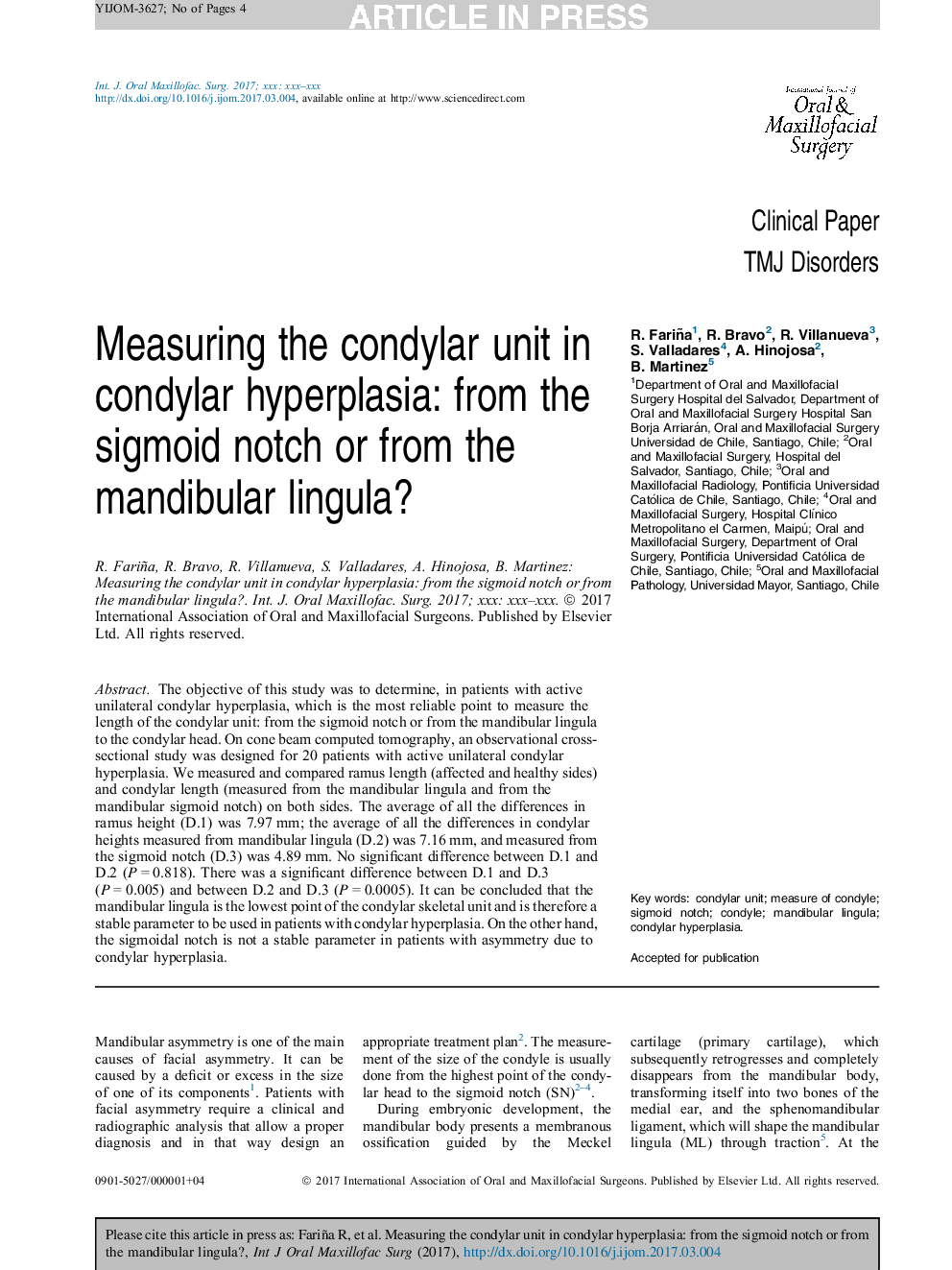| Article ID | Journal | Published Year | Pages | File Type |
|---|---|---|---|---|
| 5638872 | International Journal of Oral and Maxillofacial Surgery | 2017 | 4 Pages |
Abstract
The objective of this study was to determine, in patients with active unilateral condylar hyperplasia, which is the most reliable point to measure the length of the condylar unit: from the sigmoid notch or from the mandibular lingula to the condylar head. On cone beam computed tomography, an observational cross-sectional study was designed for 20 patients with active unilateral condylar hyperplasia. We measured and compared ramus length (affected and healthy sides) and condylar length (measured from the mandibular lingula and from the mandibular sigmoid notch) on both sides. The average of all the differences in ramus height (D.1) was 7.97Â mm; the average of all the differences in condylar heights measured from mandibular lingula (D.2) was 7.16Â mm, and measured from the sigmoid notch (D.3) was 4.89Â mm. No significant difference between D.1 and D.2 (PÂ =Â 0.818). There was a significant difference between D.1 and D.3 (PÂ =Â 0.005) and between D.2 and D.3 (PÂ =Â 0.0005). It can be concluded that the mandibular lingula is the lowest point of the condylar skeletal unit and is therefore a stable parameter to be used in patients with condylar hyperplasia. On the other hand, the sigmoidal notch is not a stable parameter in patients with asymmetry due to condylar hyperplasia.
Related Topics
Health Sciences
Medicine and Dentistry
Dentistry, Oral Surgery and Medicine
Authors
R. Fariña, R. Bravo, R. Villanueva, S. Valladares, A. Hinojosa, B. Martinez,
